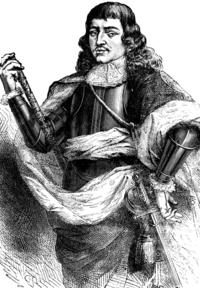Annotation:Monk's March: Difference between revisions
No edit summary |
No edit summary |
||
| Line 23: | Line 23: | ||
''Recorded sources'': <font color=teal>EMI/Harvest 7243 8 29861 2 6, Ashley Hutchings et al - "Son of Morris On" (1976/1994). Topic TSCD458, John Kirkpatrick - "Plain Capers" (1976/1992). | ''Recorded sources'': <font color=teal>EMI/Harvest 7243 8 29861 2 6, Ashley Hutchings et al - "Son of Morris On" (1976/1994). Topic TSCD458, John Kirkpatrick - "Plain Capers" (1976/1992). | ||
</font> | </font> | ||
<br> | |||
<br> | |||
</font></p> | |||
<p><font face="garamond, serif" size="4"> | |||
See also listing at:<br> | |||
Jane Keefer's Folk Music Index: An Index to Recorded Sources [http://www.ibiblio.org/keefer/m11.htm#Monma2]<br> | |||
See/Hear the tune played on melodeon by Lester Bailey [http://lesters-tune-a-day.blogspot.com/2012/12/tune-115-monks-march.html]<br> | |||
</font></p> | </font></p> | ||
<br> | <br> | ||
Revision as of 05:38, 6 January 2014
Back to Monk's March
MONK'S MARCH. AKA and see "General Monk's Goosestep," "Lord Monk's March," "Review (2) (The)," "Belle Isle's March." English, Morris Dance Tune (4/4 time). G Major. Standard tuning (fiddle). AAB (Carlin): AABB (x4), AA (Mallinson): AABA (x4) AA (Bacon). Kidson (Groves) says a tune by this name first appears in Playford's Dancing Master of 1665 as "The Lord Monks March"; however, it was actually introduced in the supplement to the 3rd edition of the Dancing Master (1657). It also appears in Playford's Musicks Hand-Maid: New Lessons and Instructions (1678). Later versions were printed with another part inlcuded ("The Wanders") for which see "Monk's March with the Wanders." The melody was in tradition was collected from dancers in the village Sherborne, Gloucestershire, in England's Cotswolds. It is still popular in English sessions in modern times, although considered to be a 'beginner's tune'. The dance itself is a heel-and-toe step dance which is said to be a satire on a Colonel or General George Monck [1], who, while he sympathized with the Royalist cause during the English Civil War, fought on the side of Cromwell's Roundheads. The story goes that Monck resolved his moral conflict by marching to battle so slowly that he missed each conflict. In fact, Monck skillfully played a political game for his entire adult life, ending up with a reputation as one of England's greatest warriors. Soon after the Restoration, Charles II raised him to the Peerage as Duke of Albemarle, Earl of Torrington, in the County of Devon.

In Wales the same tune is known as well as "Flaunting Two" (printed in 1794), and also as "Hemp Dressers (The)" and "The Monks March." The latter is said in Wales not to refer to General Monck, but rather to a melody sung by the monks of Bangor who were massacred in 613. Another variant of the melody is the Northumbrian "Proudlock's Hornpipe." Regarding the alternate title "Belle Isle's March," Kate Van Winkler Keller (1992) suggests it may refer to the small island of Belle-Île-en-Mer, located off the coast of Brittany, that was occupied by the British from 1761 to 1763. The march was published in a song-sheet under the "Bellisle" title to commemorate the occasion in 1763 when King George III reviewed troops in Hyde Park. Interestingly, as "Belisle March" it appears in the music manuscript book of a Revolutionary War soldier in America (see note for "Annotation:Belle Isle's March"). London musician Thomas Hammersley also entered "Monk's March" into his 1790 music manuscript collection.
Source for notated version:
Printed sources: Bacon (The Morris Ring), 1974; p. 287. Carlin (Master Collection), 1984; No. 34, p. 31. Mallinson (Mally's Cotswold Morris Book), 1988, vol. 2; No. 9, p. 6. Thompson (Compleat Collection of 200 Favourite Country Dances, vol. 2), 1765; No. 161
Recorded sources: EMI/Harvest 7243 8 29861 2 6, Ashley Hutchings et al - "Son of Morris On" (1976/1994). Topic TSCD458, John Kirkpatrick - "Plain Capers" (1976/1992).
See also listing at:
Jane Keefer's Folk Music Index: An Index to Recorded Sources [2]
See/Hear the tune played on melodeon by Lester Bailey [3]
